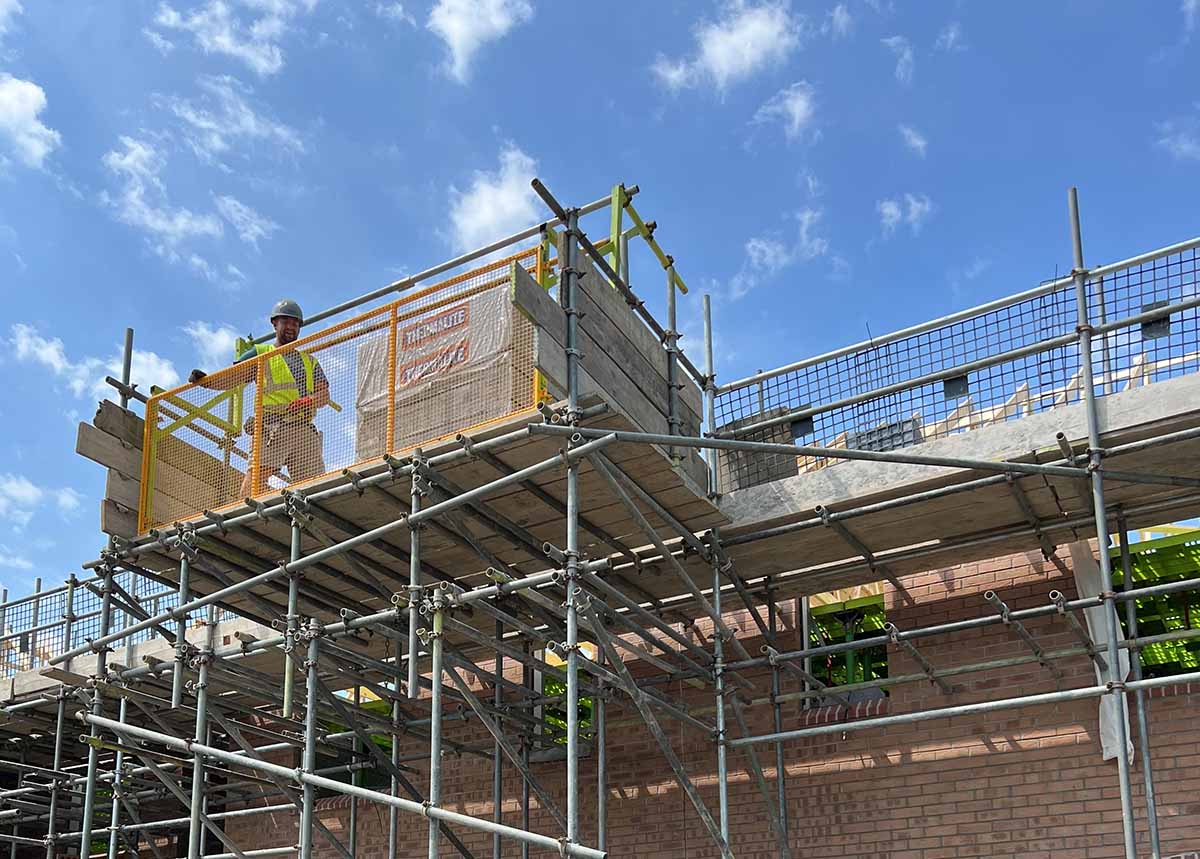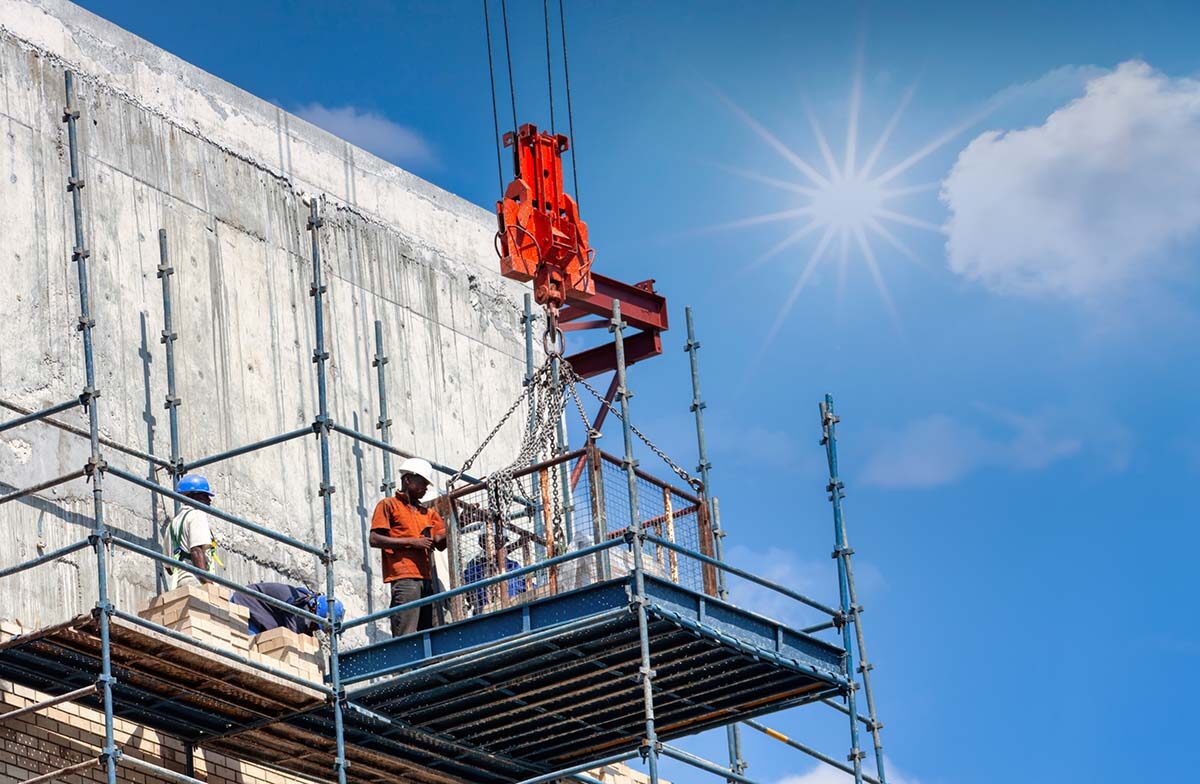Maximising Safety in Summer Construction Projects: Essential Tips for Facilities Managers
Ensuring safety on construction sites is a year-round priority, but the hot summer months pose unique challenges. Facilities managers must be particularly vigilant about scaffolding health and safety during this time.
This comprehensive guide will cover essential tips to help you maintain a safe construction environment, focusing on heatstroke prevention, proper hydration, safety gear, and the crucial role of scaffolding in summer construction.
Understanding the Risks of Summer Construction
The Impact of Heat on Construction Workers
Construction workers are especially vulnerable to heat-related illnesses due to prolonged exposure to high temperatures and direct sunlight. These conditions can lead to heat exhaustion, heatstroke, and dehydration, which can severely impact a worker’s health and productivity.
Importance of Scaffolding Health and Safety
Scaffolding plays a critical role in construction, providing access to elevated work areas and ensuring stability for workers. During summer, the risk of heat-related incidents increases, making scaffolding health and safety even more vital. Proper planning and safety measures can prevent accidents and ensure the well-being of the workforce.
Preventing Heatstroke on Construction Sites
Recognising the Symptoms of Heatstroke
Heatstroke is a severe heat-related illness that requires immediate medical attention. Facilities managers should educate workers on recognizing its symptoms, which include:
- High body temperature (above 103°F)
- Hot, dry, or red skin
- Rapid pulse
- Dizziness or nausea
- Confusion or unconsciousness
Implementing Preventive Measures
To prevent heatstroke, facilities managers should implement the following measures:
- Work Schedule Adjustments: Schedule heavy labour during cooler parts of the day, such as early morning or late afternoon.
- Shaded Rest Areas: Provide shaded or air-conditioned rest areas where workers can take breaks and cool down.
- Acclimatisation: Gradually increase workers’ exposure to hot conditions over a week or more to build their tolerance to heat.
Ensuring Proper Hydration
Importance of Hydration in Hot Weather
Proper hydration is crucial to prevent heat-related illnesses. Dehydration can impair cognitive function and physical performance, increasing the risk of accidents and health issues.
Strategies for Maintaining Hydration
Facilities managers can promote proper hydration through several strategies:
- Hydration Stations: Set up easily accessible hydration stations with ample water and electrolyte-replenishing beverages.
- Scheduled Water Breaks: Enforce regular water breaks, ideally every 20-30 minutes, to ensure workers stay hydrated.
- Education: Educate workers on the importance of drinking water regularly, even if they don’t feel thirsty.

Providing Essential Safety Gear
Heat-Resistant Protective Clothing
Protective clothing is a key component of scaffolding health and safety. During summer, it’s essential to provide gear that offers protection while minimising heat retention:
- Lightweight, Breathable Fabrics: Use materials like cotton or specially designed moisture-wicking fabrics.
- UV Protection: Ensure clothing and gear offer protection against harmful UV rays.
Personal Protective Equipment (PPE)
Personal Protective Equipment (PPE) should be adapted for hot weather conditions:
- Cooling Vests: These can help regulate body temperature and prevent overheating.
- Sun Protection: Equip workers with wide-brimmed hats, sunglasses, and sunscreen to protect against sunburn and heat exposure.
- Hydration Packs: These allow workers to carry water with them, making it easier to stay hydrated throughout the day.
The Role of Scaffolding in Maintaining Safe Working Conditions
Ensuring Structural Integrity
Scaffolding health and safety begin with ensuring the structural integrity of the scaffolding itself:
- Regular Inspections: Conduct daily inspections to check for any signs of wear, damage, or instability.
- Proper Assembly: Ensure scaffolding is assembled according to manufacturer guidelines and industry standards.
Safe Use of Scaffolding
Educate workers on the safe use of scaffolding to prevent accidents:
- Load Limits: Adhere to weight limits to prevent overloading and potential collapses.
- Safe Access: Provide safe access points, such as ladders or stair towers, to prevent falls.
- Fall Protection: Install guardrails and use fall arrest systems to protect workers from falls.
Mitigating Heat Risks on Scaffolding
Scaffolding health and safety require additional precautions during the summer:
- Heat-Resistant Materials: Use scaffolding materials that do not retain excessive heat to prevent burns.
- Shade Canopies: Install shade canopies or tarps over scaffolding to reduce direct sun exposure.
- Heat Monitoring: Use devices to monitor the temperature of scaffolding surfaces and ensure they remain safe to touch.
Training and Education
Comprehensive Safety Training
Facilities managers should provide comprehensive safety training that includes:
- Heat-Related Illnesses: Educate workers on the symptoms, prevention, and treatment of heat-related illnesses.
- Hydration and Nutrition: Teach the importance of maintaining hydration and consuming a balanced diet to combat heat stress.
- Proper Use of PPE: Train workers on the correct use of PPE, especially in hot weather conditions.
Emergency Response Plans
Develop and communicate clear emergency response plans:
- First Aid Training: Ensure all workers are trained in first aid, with a focus on treating heat-related illnesses.
- Emergency Contacts: Maintain a list of emergency contacts and procedures for quick access in case of an incident.
- Drills and Simulations: Conduct regular drills to ensure workers are familiar with emergency procedures.
A Proactive Approach
Ensuring scaffolding health and safety during summer construction projects requires a proactive approach. By prioritising heatstroke prevention, promoting proper hydration, providing essential safety gear, and maintaining the integrity and safe use of scaffolding, facilities managers can create a safer and more productive work environment.
Regular training and clear emergency response plans further enhance safety, protecting workers from the unique challenges posed by the summer heat. With these measures in place, facilities managers can confidently navigate the summer months, ensuring the well-being of their workforce and the successful completion of construction projects.
If you have a scaffolding project you’d like to discuss, please feel free to phone us on 01423 789 312 email us at info@elitescaffoldingltd.co.uk or fill out the Enquiry Form on our contact page and we’ll be happy to advise.

